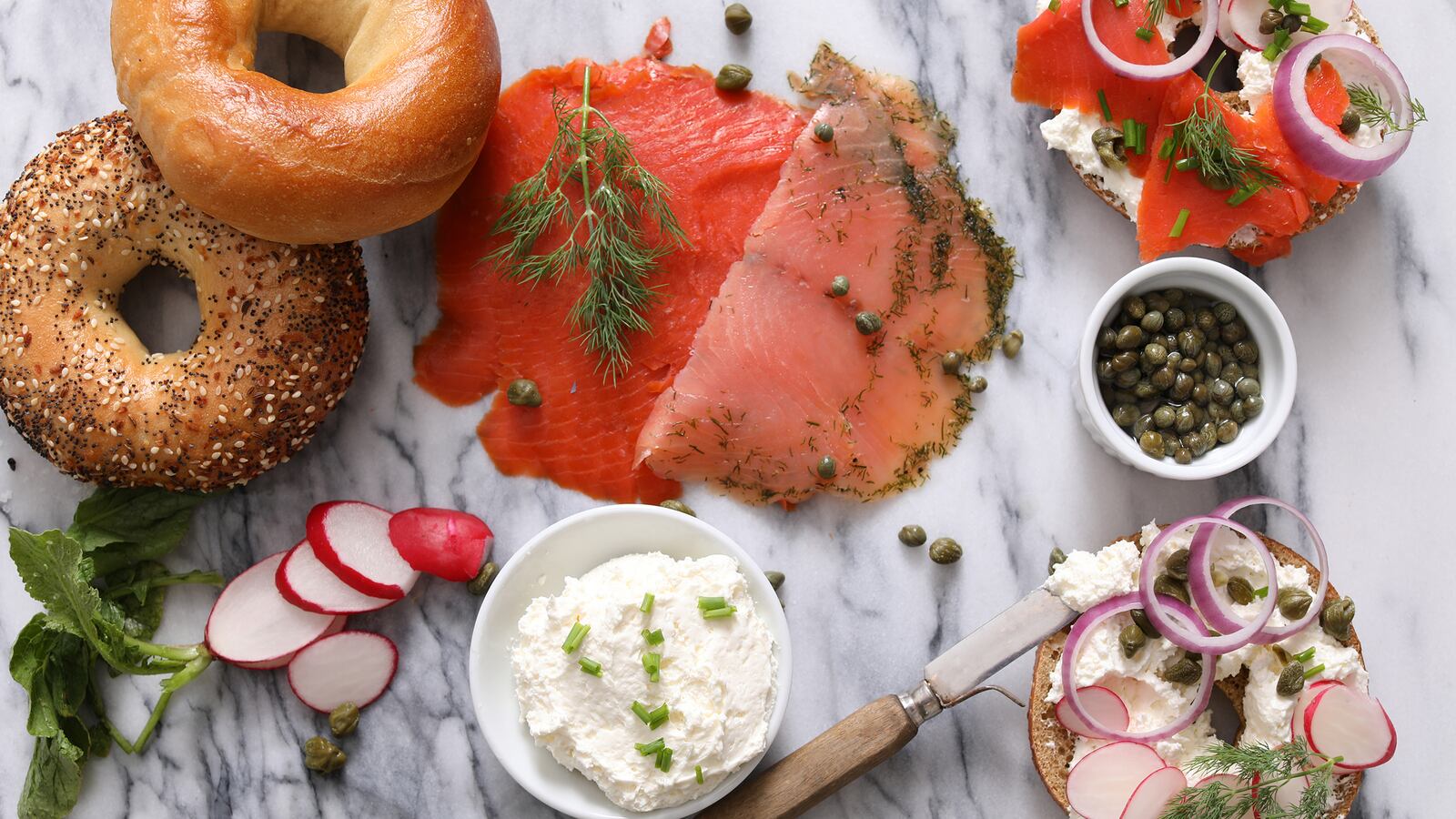Given the scents of roasting meat, sautéing onions and, simmering dill-scented chicken soup the High Holy Days during my Brooklyn childhood seemed to be all about food—never mind loftier inspirations. As diligently as my mother went about preparing brisket, potato kugel, vegetables stews and honey cake for the Rosh Hashanah start of the ten-day Jewish New Year celebration, it was really Yom Kippur that brought out her best and most ambitious cooking.
Perhaps it was because she just liked to cook (or maybe to eat?) the traditional dishes for the all-dairy meal, that marked the end of the 24-hour fast of atonement. Certainly, it was convenient since most of it was prepared in advance, with only a little heating required just before serving. Because my mother usually spent much of the Yom Kippur day in a nearby synagogue, such a meal was practical. It was and remains by all odds, my second favorite ritual meal, outdone only by the menu for the Passover Seder.
Laid out buffet style, as there were always guests, the post-Yom Kippur break fast supper included many kinds of preserved fish: smoked salmon, whitefish, my beloved silky sable, and the most miraculously sharply briny, pungent pickled herring I have ever eaten, which I prepare when feeling super ambitious. My mother would put it up right after Rosh Hashanah, choosing a barrel salt herring that she soaked and then cut in cross slices leaving skin and bones in place to preserve flavor and juices. She always insisted in having the miltz or spleen of the fish to be mashed into the finished sauce for creaminess, sour cream to be added at the table. With lots of half-crunchy slices of onion and the exotic aromatic overtones of cloves, bay leaf, hot chilies, peppercorns, coriander and mustard seeds that make up a pickling spice mix, the result was a gastronomic epiphany that got the New Year off to a fragrantly delicious start.
Along with the cream cheese, sliced tomatoes and chopped onions, there were a selection of traditional breads on the table, including rye and dark pumpernickel, as well as bagels and bialys. And for dessert, there were lovely golden blintzes filled with fluffy whipped farmer and cream cheeses scented with cinnamon and vanilla, all to be fried in butter at the end of the meal. Most generally untraditional but traditional for us, was a big platter of Hungarian Baked Fish with Vegetables, Paprikash, a holdover from my maternal Grandmother’s days as a bride when she was taught to cook by a Hungarian neighbor in the tiny Polish town of Tarnów where many Jews from the east migrated and rested a while en route to America. The sauce of tomato, green pepper, onion, garlic and paprika is what in Hungary is known as Lecsó-style often done with meats as well as fish. A wonderful main course when served hot with plain steamed rice or potatoes, it is more subtly delicious at room temperature as an appetizer or light luncheon dish, and as a comforting, festive filler after a day-long fast.
Along with such fare, plus a few L’chaim toasts with schnapps (to my family that meant the plum brandy, slivovitz) the future looked warm and bright.
INGREDIENTS:
- 1 stick Unsalted butter (one-quarter pound)
- 1 large Green pepper, seeded and sliced in strips
- 1 large Onion, peeled and sliced thinly
- 3 stalks Celery, sliced
- 1 clove Garlic, peeled and coarsely chopped
- 1 tablespoon Sweet paprika
- 1 teaspoon Salt, or to taste
- dash Ground black pepper, or to taste
- 1 20-ounce can peeled, whole, tomatoes, drained and roughly cut up
- 3 pounds Boneless, skinless white-fleshed fish cut into steaks about 1-inch thick (halibut, cod, hake, whitefish, pike, striped or black bass).
DIRECTIONS:
- Preheat oven to 375 degrees. In a small pan, melt 4 tablespoons of butter and sauté in it the green pepper, onions and celery until they begin to wilt - about 5 minutes. Do not brown. Add the garlic and paprika and sauté slowly for a minute or two, or until paprika loses its raw smell. Add the drained, cut-up tomatoes and cook over high heat until juices almost evaporate. Season to taste with salt and pepper.
- Turn half of the mixture into a baking pan and top with fish steaks. Cover with the remaining vegetable mixture and dot with the remaining butter. Cover pan with aluminum foil and bake for about 15-20 minutes, or until fish begins to look cooked.
- Remove foil and bake for about 20 minutes more or until fish flakes when tested with a fork. Serve hot with cooked rice or boiled potato, or at room temperature as an appetizer.
Serves 4 to 6.






